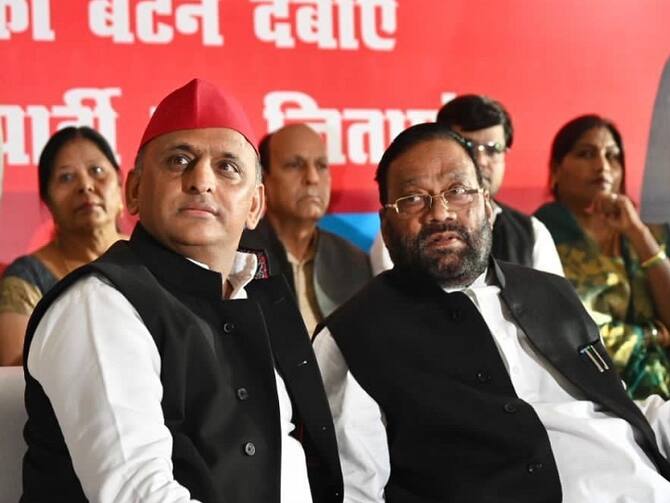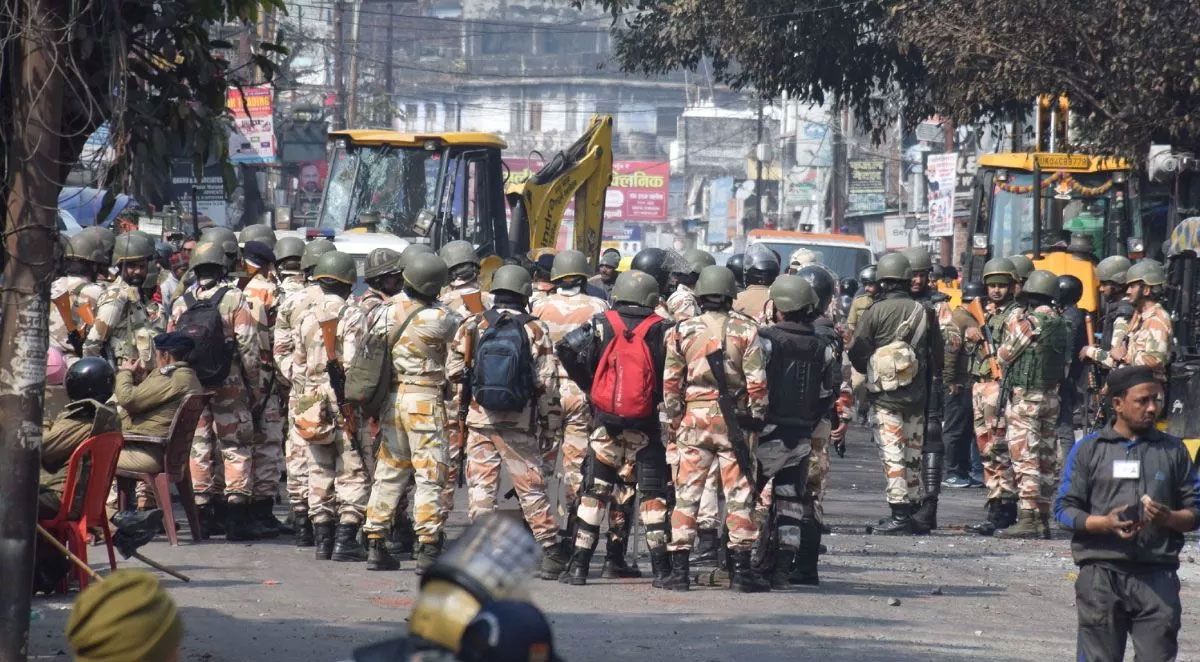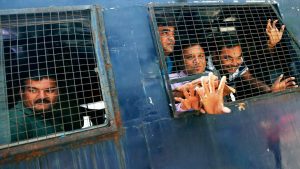
On 2 June 2016, a specially designated court gave the judgment on the Gulberg case, convicting 24 of the 66 accused and acquitting 36. Six of the accused died during the trial. The Gulberg Society massacre had claimed 69 lives during the 2002 pogrom in Gujarat. The verdict has evoked various reactions from different quarters. While some have expressed satisfaction that 24 of the accused are convicted, some, including survivors of the Gulberg violence, are disappointed that 36 have been acquitted after a excruciating 14-year wait.
The cases related to communal violence in India have been characterized by a low rate of convictions and lengthy trials. According to a study by Stanford Law School, the percentage of riot‐related cases ending in conviction across India is 18.5 (7,281 convictions out of a total 39,415 such cases completed in 2012). In comparison, till 2012, the conviction rate for 2002-Gujarat-riots-related cases was a paltry 1.18 per cent, the study says. Even this conviction rate was possible because of the herculean efforts of activists and civil society organizations, particularly Teesta Setalvad and Citizens for Justice and Peace.
Apart from the number of acquittals being much greater than the number of convictions, this judgment is a dampener for justice since it rules out criminal conspiracy behind the riots and the subsequent loss of lives. Though the orchestrators, sponsors, planners and executors of communal violence always claim that riots are spontaneous, impulsive and unplanned, facts and studies have revealed otherwise. Scholars like Paul Brass have maintained that riots are well orchestrated and political parties mobilize people for fanning hatred and spreading rumours. Large-scale riots like the ones in Gujarat could assume the proportions it did only because it was well and deliberately planned. In places where the BJP was strong like Junagadh and Navsari and didn’t face a threat politically, riots didn’t take place. Similarly, in places like Bhavnagar where the police officials were serious about stopping communal violence riots didn’t take place. Riots took place in areas like Kheda and Anand where the BJP was facing electoral challenges and wanted to mobilize votes. The question asked earlier too was, why did the riots take place so unevenly across Gujarat? If it was just the reaction (equal and opposite in Modi speak) and anger of the people that led to the riots then why didn’t riots erupt in the whole state, and moreover, at the epicentre, Godhra? Riots took place because there was a conspiracy. But by ruling out criminal conspiracy, the judgment only goes on to validate the theory.
This judgment is in contrast to the Naroda Patiya case in which the charge of conspiracy was upheld. The Naroda Patiya trial was presided over by judge Jyotsna Yagnik and the convicted include former Gujarat minister and BJP leader Mayaben Kodnani and VHP leader Babu Bajrangi. She stated that Kodnani was the “kingpin” of the conspiracy. Because of this judgment, Yagnik is facing threats to her life and the state government is refusing to provide her with adequate security. Did the court ever consider how riots at different places like Naroda Patiya and Gulberg Society having the same trigger and taking place in the same time frame could be different? If one was the result of a conspiracy, how was the other not?
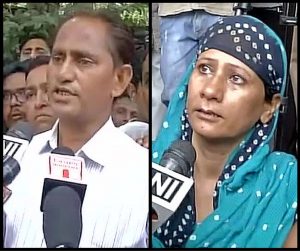
While some hail this judgment as an example of justice largely served, what is overlooked is that among those acquitted included those in influential positions like K.G. Erda and Bipin Patel. While K.G. Erda was the then deputy superintendent of police of the area, Bipin Patel was a BJP corporator. Ehsaan Jafri, former parliamentarian from Gulberg Society, was among the 69 killed. He was hacked to death. Evidence recorded by the Special Investigation Team (SIT) showed that he had made frantic calls to the then police commissioner. In spite of such calls, the rioting continued for six long hours. A determined police force can reach the scene of a riot usually within a few minutes or, at the most, an hour. No help came from the police or politicians. The mob, mainly consisting of sword-wielding VHP workers (another sign of planning and well-preparedness), dragged the residents of Gulberg Society out of their houses and brutally killed them. How can this delay be explained? The only plausible explanation is that there was the state government and the rioters were on the same side.
In our country, so embedded is the influence and interference of political interests that even if the police or judiciary want to carry out their duties fearlessly they are not allowed to. Time and again, upright officials who have spoken against vested interests in the government have been penalized in different ways. While officers like Sanjiv Bhatt (he said that the then CM had asked the police to allow Hindus to vent their anger on Muslims when riots broke out) have been expelled from the service, judges like Yagnik have had to face a lot of pressure and threats.
In a separate case, the National Investigation Agency (NIA) had asked special public prosecutor Rohini Salian to be lenient to those accused in the Malegaon blasts belonging to Hindutva organizations. The names of Hindutva leaders like Sadhvi Pragya, whose links with the blasts were well established by the Anti Terror Squad (ATS) headed by Hemant Karkare, have recently been dropped from the charge sheet.
Police are entrusted with crucial tasks of protecting innocent citizens and collecting evidence of crimes if and when they are committed. Communal violence targeting a particular community and on a scale in which thousands are killed, displaced and missing, amounts to a crime against humanity. In such cases, the police should be even more vigilant. But what actually happens is just the opposite.
The survivors of Gulberg Society and of other incidents during the Gujarat riots have had a harrowing time, running from pillar to post to make their voices heard and appeal for justice. Due to hasty acquittals of powerful Hindutva leaders, the survivors took the battle to the Supreme Court, which then transferred these cases out of Gujarat. This showed the SC had little confidence in the criminal justice system of Gujarat. The SC also constituted the SIT in 2008 to look into the Gulberg and eight other cases. However, the SIT shied away from holding high-profile ministers and political leaders accountable and gave them a clean chit. This made the SC appoint Raju Ramachandran amicus curie to revisit the aspects of the case that dealt with the complicity of the then Gujarat Chief Minister Narendra Modi and other officials. The amicus curie registered his disagreement with the SIT and said that there was adequate evidence at the pre-trial stage to proceed against Chief Minister Modi. Despite such breakthroughs, convictions been less than expected, eroding faith in the SIT.
This is not the first time though, as was pointed out at the outset, that a large number of convictions haven’t taken place. Since Independence, a number of riots have taken place and 31 inquiry commissions have been constituted. Some of the inquiry commission reports like that of the Srikrishna Commission clearly pointed out the role of the Shiv Sena and its leader Bal Thackeray in the Mumbai riots. It describes Thackeray as the “veteran general commanding his loyal Shiv Sainiks to retaliate by organised attacks against Muslims”.
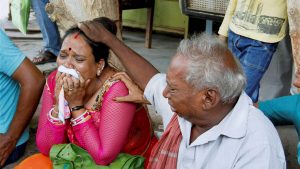
Despite the indictment, no criminal action was initiated against the Shiv Sena and its leaders. The report also squarely blamed the BJP for fanning communal flames by organizing rallies, maha aratis, processions and delivering hate speeches smacking of communal incitement. On the one hand, when a state-constituted commission of inquiry comes out with such a clear report, no convictions take place and claims of conspiracy are rubbished. On the other hand, as soon as the train was torched in Godhra, without any investigation, the then chief minister emphatically announced that it was the Muslims who were responsible for burning the train and subsequently the death of 58 kar sevaks. This was cited as a pretext then to attack Muslims in the state in the most unspeakably brutal manner. The Gulberg Society case judgment found only 11 guilty of murder of 69 people. It convicted others of lesser offences.
The above discussion reflects a rather grim and discouraging scenario in the country when it comes to delivering justice to survivors of communal violence, which has claimed over 40,000 lives since Independence. In order to reinstate the faith of citizens in law and the grievance redressal mechanism system, some measures must be taken:
- The collection of evidence by police which sets the tone for the whole trial and helps in securing convictions must be done in the most incorruptible manner. Most of the time it is observed that FIRs are not registered. This must be paid attention to and resolved. Proper training and orientation must be given to the police in this regard.
- The police machinery and judiciary shouldn’t be pawns for political parties but should function fearlessly and impartially.
- After the traumatic experience of riots and its aftermath, it is understandable that the survivors are living in fear. A more victim-friendly approach must be made part of the justice process so that witnesses and survivors can fearlessly depose in the trial. The survivors must be encouraged to come forward and initiate proceedings.
- The completion of trial cases related to communal violence must be ensured in a time-bound fashion.
- Above all, what is required is legislation for the prevention of targeted violence. Such legislation must clearly spell out the mechanisms and procedures for criminal justice in an impartial environment.
Democracy and rule of law can survive only when citizens have faith in the justice system and justice is served.



